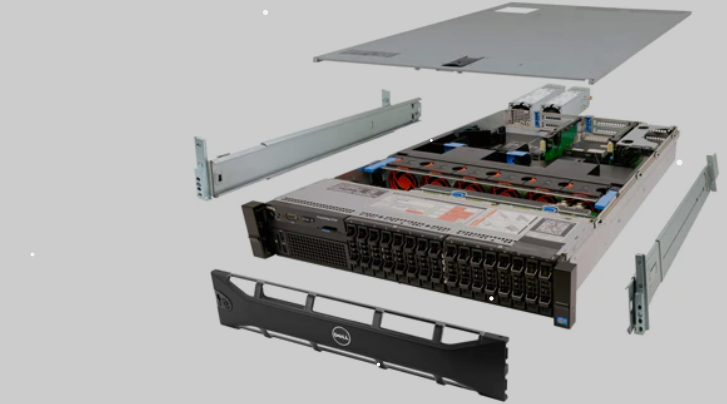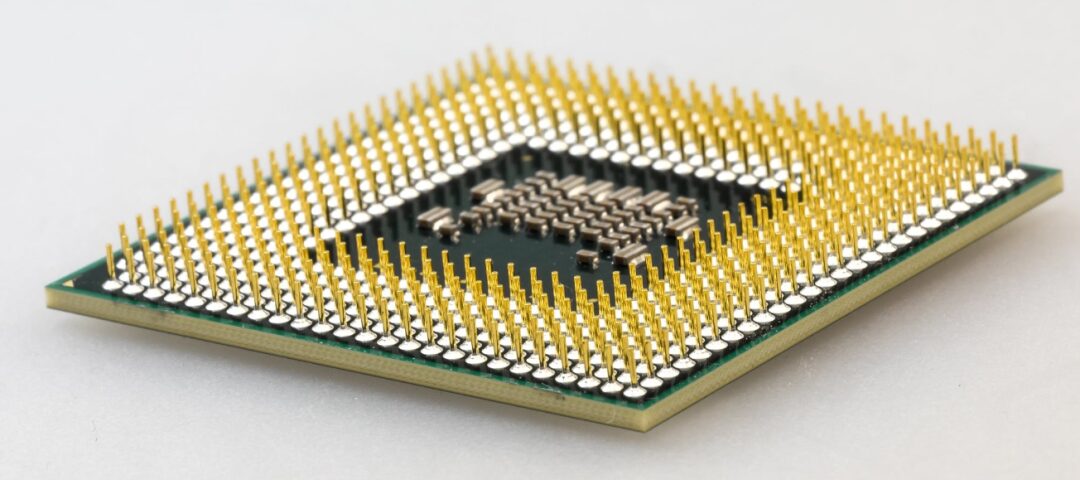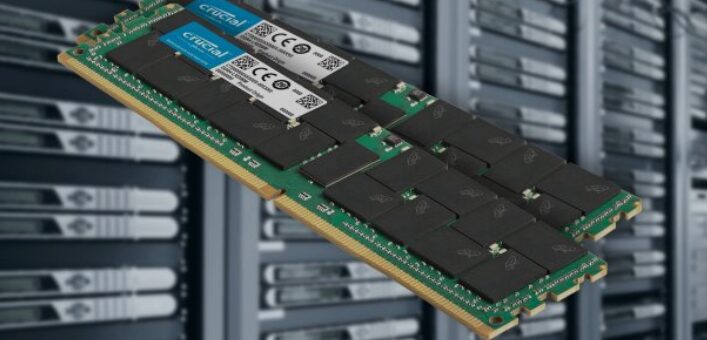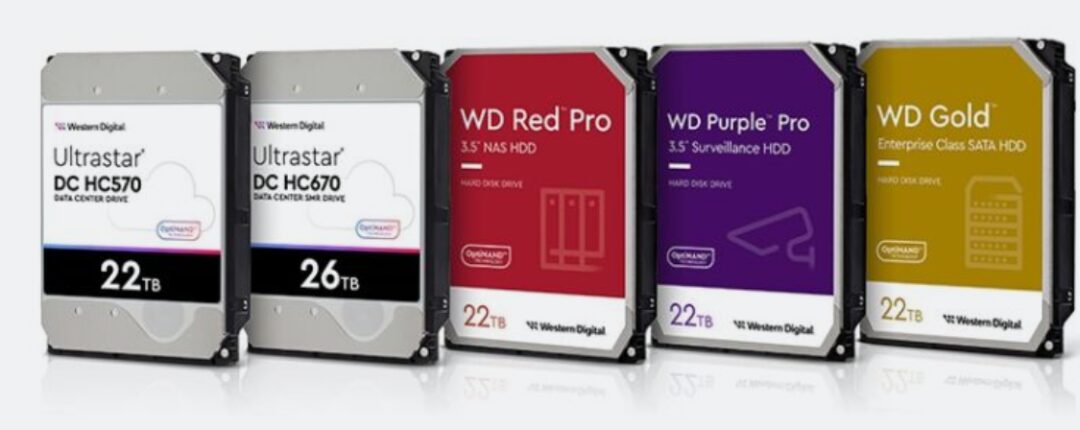When purchasing server hardware, many factors need to be considered, such as the number of processors, available memory, and total storage capacity. When comparing servers offered by vendors, buyers should carefully evaluate eight important features.

Processor
One of the most important components to consider when purchasing server hardware is the processor, which performs data calculations. Also known as the Central Processing Unit (CPU), the processor does all the heavy lifting when running programs and filtering data. Most servers run multiple processors, typically one per socket. However, processors can also consist of multiple cores to support multiprocessing capabilities.
Multiple cores usually lead to better performance, but the number of cores is not the only factor to consider. Buyers should also consider processor speed (CPU clock speed) and available cache, as well as the total number of sockets, since the differences between these processors can be significant.
For example, the NEC Express5800/D120h blade server supports up to two Intel Xeon Scalable processors. One of the most powerful processors offers 26 cores, 35.75 MB of cache, and a 2.0 GHz clock speed. In comparison, the Dell PowerEdge M830 blade server using the Xeon E5-4600 v4 processor has one of the most powerful options with 22 cores, 55 MB of cache, and a 2.20 GHz clock speed. The Dell server also supports up to four processors instead of two.

Memory
Sufficient server memory is critical for high-performance systems; the more available memory, the better the performance of workloads. However, other factors also affect performance, such as the speed and quality of the memory. Most server memory consists of dual in-line memory module circuit boards and some type of random access memory.
Server memory may also include fault tolerance features or other enhancements for reliability. One of the most common features is Error-Correcting Code (ECC), which is a method for detecting and correcting common unit errors. When evaluating server hardware memory, you should look at the entire product and keep in mind the types of workloads and applications you run.
For example, the Fujitsu BS2000 SE series mainframe supports up to 1.5 TB of memory. However, IBM’s ZR1 mainframe belongs to the z14 series and supports up to 8 TB of memory. The ZR1 also offers up to 8 TB of available independent memory redundancy arrays to shorten transaction response times, preemptive dynamic RAM features for quick fault isolation and recovery, and ECC technology to detect and correct bit errors.

Storage
The number and type of internal storage supported by servers vary greatly, partly due to different workflows and applications. For instance, a server hosting a relational database management system has different requirements from a server hosting web applications. Additionally, the use of external storage such as Storage Area Networks (SAN) can also affect internal storage needs.
When purchasing server hardware, it is essential to evaluate each intended server to ensure it can meet your storage needs. Nowadays, most servers support Solid State Drives (SSD) and Hard Disk Drives (HDD). However, buyers should verify this support, as well as the drive technologies supported by the server, such as Serial Attached SCSI (SAS), Serial ATA (SATA), or Non-Volatile Memory Express (NVMe). Other considerations should include drive speed, capacity, durability, and support for Redundant Array of Independent Disks (RAID).
For example, Oracle’s X7-2 rack server supports up to 8 2.5-inch HDD or SSD, SAS, or NVMe, and multiple RAID configurations. In contrast, Inspur’s TS860G3 rack server can handle up to 16 drives (SSD or HDD) and supports SAS and SATA. However, the Inspur server does not support NVMe, which may mean suboptimal performance for SSDs.

Connectivity
The ability of a server to connect to networks, peripherals, storage, and other components is crucial for its effectiveness within a data center. Servers need the necessary connectors and drivers to ensure they can communicate properly with other entities and handle various workloads. Buyers need to accurately determine what type of connections are needed and then check the server specifications to verify that it meets these requirements.
Servers vary greatly in this regard, so buyers should pay attention to details such as the number and speed of Ethernet connectors, the number and type of USB ports, the availability of management interfaces, the types of protocols available, support systems for SAN and other storage, and any other components needed to facilitate connections.
Acer’s Altos R380 F3 rack server is a great example of what connection features to look for when purchasing server hardware. It includes two Ethernet ports (1 GB or 10 GB), one RJ-45 management port, three USB 3.0 ports, one USB 2.0 port, and one video port. Additionally, this server offers up to 7 PCIe 3.0 slots and 1 PCIe 1.0 slot.
Hot Swappable
Servers offer varying degrees of hot-swappable capability. Hot-swapping refers to the ability to replace or add components without shutting down the system.
Hot-swappable is sometimes referred to as hot-pluggable, although theoretically, hot-swappable functionality is limited to the ability to add components but not replace them without shutting down the system. Due to the confusion around these terms, it is best to verify how each vendor uses them.
One of the most common hot-swappable components is the disk drive. For example, the Cisco UCS B480 M5 blade server supports hot-swappable hard disks, as do the Huawei FusionServer CH242 V5 blade server and the Intel R2224WFQZS rack server.
For blade systems, hot-swappable functionality is often located within the chassis itself. An example is the chassis used by Lenovo ThinkSystem SN850 blade server, which provides hot-swappable functionality for both the server’s disk drives and for fans and power supplies. However, these types of functionalities are not limited to blade servers. Even rack servers like the Acer Altos R380 F3 support hot-swappable fans and power supplies.
Redundancy
Redundancy is critical to ensure that servers continue to operate when components fail. Most servers typically provide some level of redundancy for hard drives, power supplies, and fans. For example, the ASUS RS720-E9-RS12-E rack server offers redundant power supplies, while the HPE ProLiant DL380 Gen10 rack server provides redundant fans.
Similar to hot-swappable capabilities, redundancy available in blade servers is often located within the chassis. For example, the chassis supporting the Dell PowerEdge M830 blade server and the Supermicro SBI-6129P-T3N blade server both provide redundant power supplies.
However, the Dell chassis also provides redundant cooling components, and the server itself also offers redundant embedded hypervisor capabilities.
Management
Administrators must effectively manage servers to ensure their continual operation while providing optimal performance. Most servers at least offer some management capabilities.
For example, many servers support the Intelligent Platform Management Interface (IPMI), a specification developed by Dell, HP, Intel, and NEC for monitoring and managing server systems. Unsurprisingly, the servers offered by these companies (such as the Dell PowerEdge M830, HPE ProLiant DL380 Gen10, Intel Server System R2224WFQZS, and NEC Express5800/B120g-h) all comply with the IPMI standard.
However, servers are certainly not limited to IPMI capabilities. For example, the Acer Altos R380 F3 rack server comes with Acer Smart Server Manager; the ASUS RS720-E9-RS12-E rack server is equipped with the ASUS Control Center; and the Cisco Unified Computing System (UCS) B480 M5 blade server comes with Cisco Intersight, Cisco UCS Manager, Cisco UCS Central software, Cisco UCS Director, and Cisco UCS Performance Manager.
Blade systems often provide some type of module to manage individual blades. For instance, the Huawei FusionServer CH242 V5 blade system includes a smart baseboard management system module that monitors the operational status of compute nodes and supports remote management.
Unsurprisingly, systems like Fujitsu’s BS2000 mainframe provide various management features. For example, each BS2000 system includes a management unit that works with the SE manager to provide a centralized interface for managing the entire server environment. IBM’s ZR1 mainframe includes the IBM Hardware Management Console (HMC) 2.14, IBM Dynamic Partition Manager, and an optimized z/OS platform for IBM Open Data Analytics.
Security
Another important factor to consider is the security features of the server. Like other features, the capabilities provided by servers can vary widely, with each vendor taking a different approach to protect their systems.
For example, the Lenovo ThinkSystem SN850 blade server offers an integrated Trusted Platform Module 2.0 chip to store RSA encryption keys for hardware authentication. This server also supports secure boot, Intel’s Execute Disable Bit (EDB) feature, and Intel Trusted Execution Technology.Another example is the Oracle Server X7-2 rack server, which comes equipped with Oracle Integrated Lights Out Manager 4.x, a cloud-ready service processor for monitoring and managing system and chassis functions. On the other hand, the Huawei FusionServer CH242 V5 blade server supports Advanced Encryption Standard – New Instructions, as well as Intel’s EDB feature and Trusted Execution Technology.
IBM’s ZR1 mainframe is also robust in terms of security. This server includes on-chip encryption co-processors and encryption capabilities via Central Processor Assist for Cryptographic Functions (CPACF), which includes the new Crypto Express6S feature for universal encryption and supports secure cloud policies. CPACF is standard configuration for each core. The platform also includes IBM Secure Service Containers for securely deploying container-based applications.
For those looking to enter the software implementation consulting field, click《How to Enter Implementation Roles, Take a Look》for more information.
